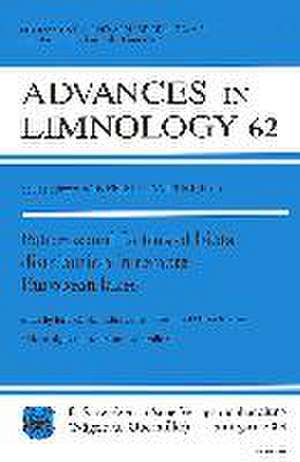Patterns and factors of biota distribution in remote European mountain lakes: Advances in limnology / Ergebnisse der Limnologie, cartea 62
Editat de Jordi Catalan, Christopher J Curtis, Martin Kernanen Limba Engleză Paperback – 22 dec 2009
Preț: 523.92 lei
Preț vechi: 646.81 lei
-19% Nou
Puncte Express: 786
Preț estimativ în valută:
100.26€ • 105.02$ • 83.09£
100.26€ • 105.02$ • 83.09£
Carte indisponibilă temporar
Doresc să fiu notificat când acest titlu va fi disponibil:
Se trimite...
Preluare comenzi: 021 569.72.76
Specificații
ISBN-13: 9783510470648
ISBN-10: 3510470648
Pagini: 440
Ilustrații: 77 schwarz-weiße Tabellen, 110 Abbildungen
Dimensiuni: 164 x 245 x 25 mm
Greutate: 0.8 kg
Editura: Schweizerbart Sche Vlgsb.
Seria Advances in limnology / Ergebnisse der Limnologie
ISBN-10: 3510470648
Pagini: 440
Ilustrații: 77 schwarz-weiße Tabellen, 110 Abbildungen
Dimensiuni: 164 x 245 x 25 mm
Greutate: 0.8 kg
Editura: Schweizerbart Sche Vlgsb.
Seria Advances in limnology / Ergebnisse der Limnologie


